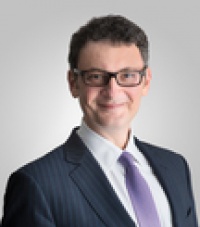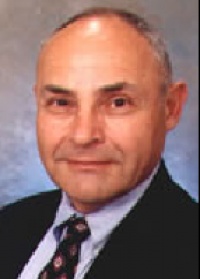
Dr. Paul S. Issack, MD, PhD
Orthopedist | Adult Reconstructive Orthopaedic Surgery
170 William St 8th Floor New York NY, 10038About
Dr. Issack is board certified by the American Board of Orthopaedic Surgery and is a fellow of the American College of Surgeons, the American Orthopaedic Association and the American Academy of Orthopaedic Surgeons. He is a member of the American Association of Hip and Knee Surgeons, the North American Spine Society, the Orthopaedic Trauma Association and the Orthopaedic Research Society. He has authored over 50 publications and abstracts on the topics of joint replacement, spinal reconstruction and trauma surgery in peer reviewed orthopaedic journals and textbooks, and has lectured on the above topics at national and regional scientific meetings. Dr. Issack specializes in adult reconstructive joint surgery, adult and pediatric spinal surgery and trauma surgery. Dr. Issack completed a medical scientist training program earning Master of Science and Doctor of Philosophy degrees from the New York University Graduate School of Arts and Science as well as a Doctor of Medicine degree from the New York University School of Medicine. He then completed internship and residency training in orthopaedic surgery at the New York University Medical Center-Hospital for Joint Diseases/Bellevue Hospital in New York City. He then completed clinical fellowship training in Metabolic Bone Diseases/Orthopaedic Oncology, Adult Reconstructive Joint Surgery, Orthopaedic Trauma Surgery and Spine/Scoliosis Surgery, all at the Hospital for Special Surgery in New York. Dr. Issack is an attending orthopaedic surgeon at New York-Presbyterian Hospital. He currently serves as Chief of the Divisions of Adult Reconstructive Joint Surgery and Orthopaedic Trauma for New York Downtown Orthopaedic Associates at New York-Presbyterian/Lower Manhattan Hospital. He has had an active role in resident and medical student education and holds the title of Clinical Associate Professor of Orthopaedic Surgery at Weill Cornell Medical College/Cornell University. He also educates U.S. and international trauma fellows in his role as Director of the AO Trauma Fellowship at New York-Presbyterian/Lower Manhattan Hospital. In addition, Dr. Issack performs emergent trauma surgeries in multiple level 1 trauma centers in the New York area including New York-Presbyterian/Queens in Flushing, NY, New York University Lutheran Medical Center in Brooklyn, NY, and Richmond University Medical Center in Staten Island, NY.
Education and Training
Hospital for Joint Diseases Residency 2005
Hospital for Special Surgery Fellowship, Adult Reconstruction 2006
Hospital for Special Surgery Fellowship, Trauma 2007
Hospital for Special Surgery Fellowship, Spine and Scoliosis Surgery 2011
New York Univ Sch of Med, New York Ny 1998
Board Certification
American Board of Orthopaedic Surgery
Provider Details

Dr. Paul S. Issack, MD, PhD's Expert Contributions
partial vs full joint replacement
In a partial hip replacement (hemiarthroplasty), the acetabulum (hip socket) is not changed. A stem with a femoral head (ball) is placed in the femur and the acetabulum is left alone. This operation is generally done for a type of hip fracture (femoral neck fracture) in very elderly or frail patients who are unable to tolerate a total hip replacement. A total hip replacement involves in addition to the above, replacing the socket with a metal implant. This provides better pain relief than a partial hip replacement. This is the standard of care for patients who are undergoing hip replacement for arthritis, and also the treatment of choice for femoral neck fractures, in most patients who are able to tolerate the surgery (with the exception being very young patients who sustain a femoral neck fracture). If a partial hip replacement is performed in a relatively healthy active patient to treat hip arthritis, the patient is likely to return within a year or so with worsening of the arthritis in the acetabulum. That may require additional surgery to convert the partial to a total hip replacement. READ MORE
Expert Publications
Data provided by the National Library of Medicine- Risks associated with blood transfusion after total knee arthroplasty.
- Surgical correction of kyphotic deformity in spinal tuberculosis.
- Formation of a large rice body-containing cyst following total hip arthroplasty.
- Axial lumbosacral interbody fusion appears safe as a method to obtain lumbosacral arthrodesis distal to long fusion constructs.
- Management of metastatic bone disease of the acetabulum.
- Use of porous tantalum for acetabular reconstruction in revision hip arthroplasty.
- The axial transsacral approach to interbody fusion at L5-S1.
- Surgical management of metastatic disease of the proximal part of the femur.
- Genetic elements regulating HES-1 induction in Wnt-1-transformed PC12 cells.
- Altered expression of helix-loop-helix transcriptional regulators and cyclin D1 in Wnt-1-transformed PC12 cells.
Areas of expertise and specialization
Faculty Titles & Positions
- Clinical Associate Professor of Orthopaedic Surgery Weill Cornell Medical Center 2015 - Present
Professional Memberships
- Orthopaedic Trauma Association
- American Academy of Orthopaedic Surgeons
- American Association of Hip and Knee Surgeons
- North American Spine Society
Fellowships
- hospital for special surgery
- Cornell Univ. Medical College
Charities and Philanthropic Endeavors
- Orthopaedics Overseas, Health Volunteers Overseas
Fellowships
- Adult Joint Reconstructive Surgery, Hospital for Special Surgery
Professional Society Memberships
- American Academy of Orthopaedic Surgeons, American Association of Hip and Knee Surgeons, Orthopaedic Trauma Association, North American Spine Society, American Medical Association
What do you attribute your success to?
- His parents.
Hobbies / Sports
- Exercise, Enjoyed playing the Piano
Areas of research
Adult Reconstruction, Trauma, Spinal SurgeryDr. Paul S. Issack, MD, PhD's Practice location
Paul S. Issack, MD, PhD
170 William St 8th Floor -New York, NY 10038Get Direction
Dr. Paul S. Issack, MD, PhD's reviews
Write ReviewPatient Experience with Dr. Issack
Recommended Articles
- Broken Tibia: Symptoms and Treatment
OverviewThe tibia and fibula are the two bones in your lower leg. The larger bone is the tibia, which supports most of a person's weight. It is also an important part of the ankle and knee joints. A fractured or broken tibia is usually along the length of the bone and in between the knee and above...
- What Is the Xiphoid Process?
Introduction The xiphoid process is the smallest part or structure of the breastbone. The structure is made of cartilage at birth, but tends to develop into a bony structure when an individual reaches adulthood. It is situated from where the lower ribs are attached to the breastbone. The pointed end...
- What Is Spinal Decompression?
The human back is a complex structure of muscles, ligaments, bones, joints, and nerves. It is common for people to experience back problems at some point in their life for a variety of reasons. Since the pain can radiate into the back and even from other parts of the body, it is very difficult to...
- Ehlers-Danlos Syndrome: Symptoms, Causes, Diagnosis, and Treatment
What is Ehlers-Danlos syndrome (EDS)?Ehlers-Danlos syndrome (EDS) is a group of genetic disorders that affect the body’s connective tissues, which are proteins that support the blood vessels, skin, bones, and other organs in the body. Connective tissues also provide elasticity and strength to the...
- What Is Saddle Paresthesia?
Saddle ParesthesiaA set of severe sciatica symptoms are described in saddle paresthesia. These symptoms can occur in the buttocks, perineum, and groin. Sometimes, this condition is also referred to as saddle anesthesia. When there is a sensation of tingling and numbness in the affected area, the...
- Are There Risks to a Spinal Stenosis Surgery?
Like any other surgical procedure, spinal stenosis surgery has its own risks and possible complications. However, if performed correctly by professional medical staff, the possibility of any complication after the surgery is low.The potential risks and possible complications following a spinal...
Nearby Providers
- Dr. David T. Neuman M.D.8340 Woodhaven Blvd Queens Glendale NY 11385
- Rupesh Tarwala130 E 67TH ST NEW YORK NY 10065
- Dr. Leon E. Popovitz M.D.79 Hudson St Hoboken NJ 07030
- Dr. Ron Noy M.D.424 Madison Avenue New York New York 10017
- Dr. Christopher Bruce Michelsen MD9711 Broadway New York NY 10034
- Dr. Oscar Vazquez M.D.25 Prospect Ave Hackensack NJ 07601
Nearest Hospitals
MOUNT SINAI BETH ISRAEL/PETRIE CAMPUSl
FIRST AVENUE AT 16TH STREET NEW YORK NY 10003










